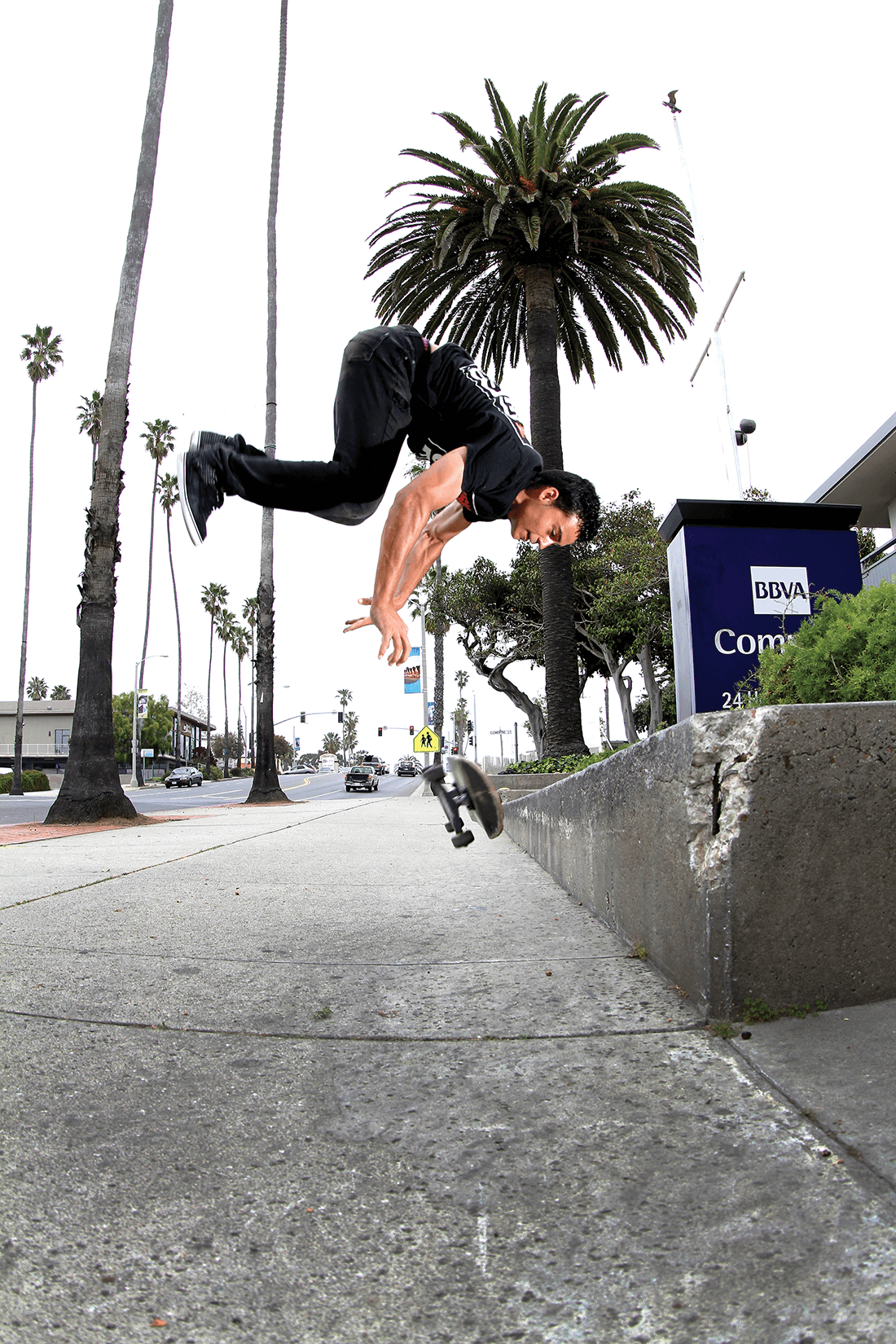
19 May KILIAN MARTIN Engages Skateboarding
Words & Photos By Eric Hendrikx
“Kilian, the way he skates, though he does his thing and that’s for him, it makes me want to do more, in a way, what he’s doing. Not specifically how he’s skating, but engage and really do something like that again. And that inspires Me.” ~Rodney Mullen
Kilian Martin has been at the center of many skateboarding conversations, both civil and contentious, since he came to California from Madrid and joined the likes of the Bones Brigade, skating for Powell Peralta. Ironically, his skating takes place far on the outskirts of the sport. Simply put, Kilian has stirred the pot by paying no attention to mainstream skateboarding, what has been shoveled down our throats by a tunnel-visioned industry as socially acceptable, in an activity that was founded on freedom and self-expression. Strip down the activity to an individual artist expressing himself on his board, and you get Kilian. His innovative and graceful interpretations caught on film by visionary cinematographer Brett Novak have drawn the views of millions upon millions, possibly more than any other collection of skateboard films, a clear confirmation that the world of skateboarding, mainly its participants, starve for something fresh. The lively duo have paired up and successfully delivered to the world a poetic perspective of a pastime recognized for its harsh environments, bleeding results, and authoritative opposition.
In a recent interview with Revolt In Style Magazine, Kilian gives detailed insight into his creative process and intentions as an urban artist of the twenty-first century.
RIS: Your skate videos are some of the most viewed of any other skate videos. How did this come about?
MARTIN: In the beginning I was doing my own videos. They weren’t getting a lot of views because I was just doing random things in those videos. I saw some of Brett Novak’s videos online and I liked them a lot. His videos seemed so artistic and I felt like they his style of filming and editing was a perfect match for my style of skating. In 2009, I met him at a skate contest in California. We decided to film something together. The reaction was much more than we expected. So we decided to do another one. Brett came to Spain and we created A Skate Regeneration. We’ve done five videos now. Brett is editing the next one right now that we just filmed in Austria.
RIS: Where did you film the others?
MARTIN: We shot our second video in Los Angeles over five days and came up with A Skate Escalation. The response was also very good and we were invited to come to the UK for three weeks to film part of a documentary television series for Concrete Circus. What Brett and I filmed came to be called A Skate Illustration. Then Altered Route was filmed in the California Mojave Desert.
RIS: Altered Route takes place in an abandoned water park. How did you find this location?
MARTIN: Mercedes Benz approached us to make a skate film. Our original idea was to skate in an old Mercedes Benz junkyard, but when we went to try it out, the surface of the ground was really bad and really hard to skate on. Brett had seen the abandoned waterpark during his travels from Los Angeles to Las Vegas. So on his last drive back from Las Vegas he stopped in and took some pictures. When I saw the photos I thought it looked amazing. We showed the producer, who agreed, and we decided to make the video there.
RIS: How did you come up with the tricks for the video?
MARTIN: A lot of the tricks happened when I got to the park, naturally as I saw interesting things to skate. And a lot of the tricks were prepared in advance, in my mind. I spent a lot of time studying the photos that Brett took. I stared at them for hours imagining what I could do on the slide and some of the obstacles in the park. I wrote all my ideas down in a journal I keep of my ideas and tricks. When we got to the park, I found I was able to do a lot of the tricks I had written down, plus a lot of tricks I thought of while we were working.
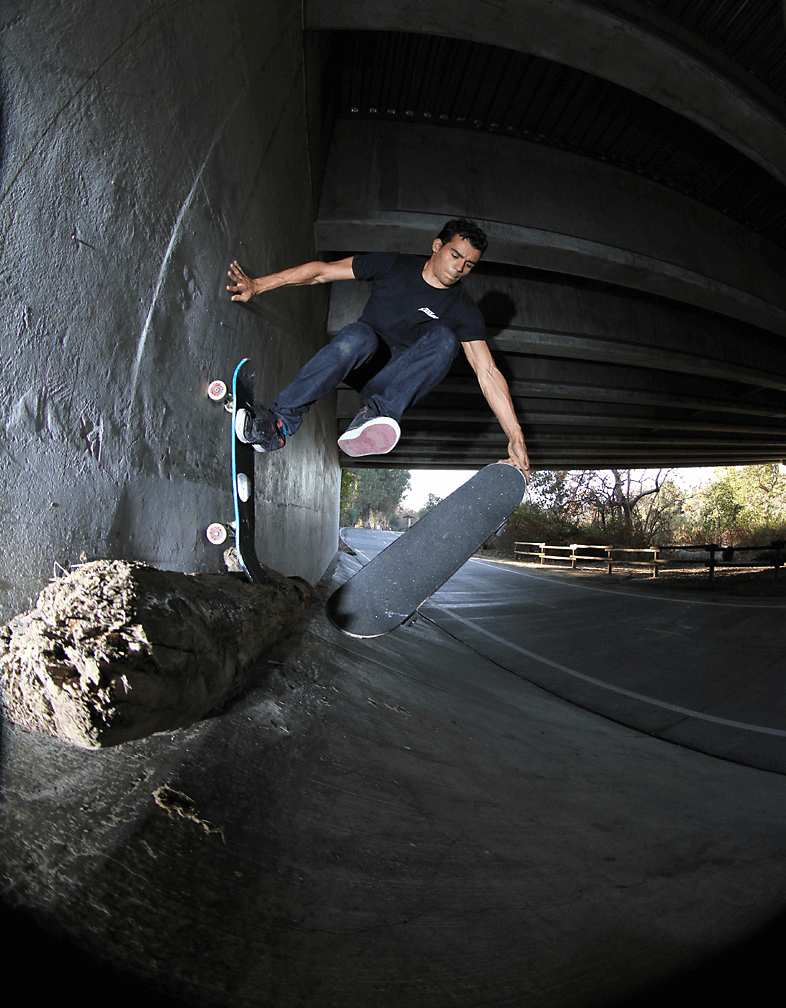
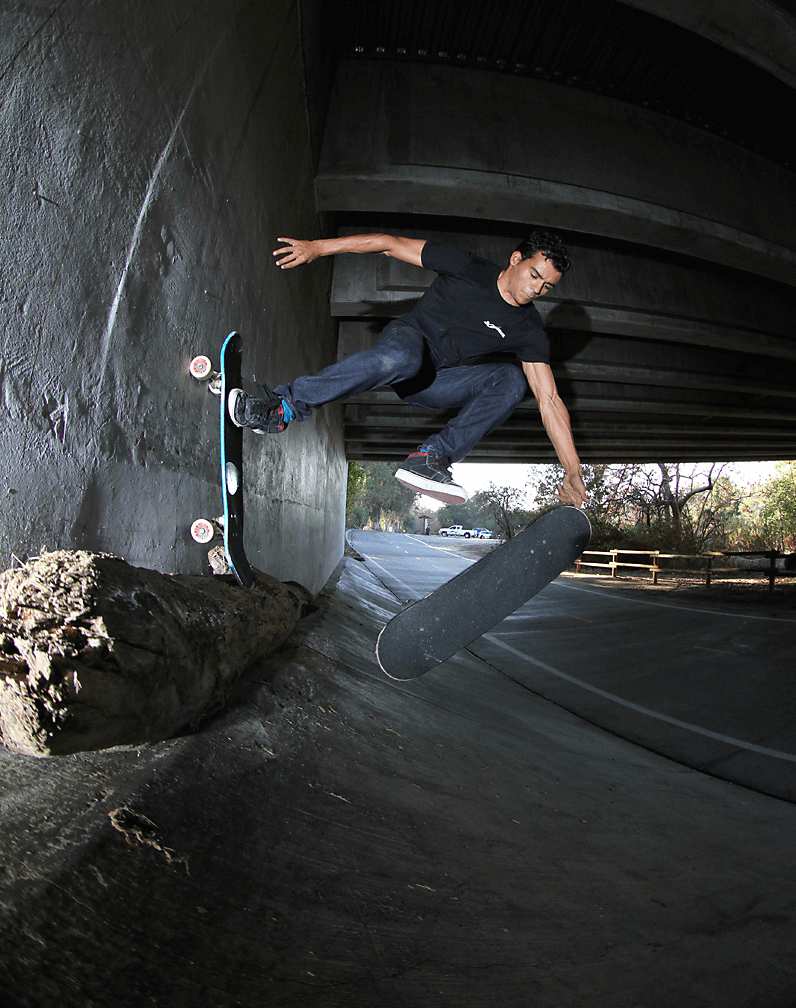
RIS: Is there a particular video that you’re most proud of?
MARTIN: The last one, because I always try to get better with every video, so Altered Route is the most recent. I am always pushing myself to do better. I don’t like to watch my videos because I know that I’m better now. A Skate Regeneration is also a favorite because we did it in Spain.
RIS: You grew up in Spain. Why did you decide to move to California?
MARTIN: I have always loved eighties movies and surfing. Coming to Los Angeles was always a dream of mine, even before I started skating. I really only started skating because I thought it would improve my surfing.
RIS: How did this apply into your unique style of skating?
MARTIN: I started surfing when I was ten years old. I didn’t start skating until I was sixteen. Skating became more and more fun for me and I started to do it all the time. I always did my own thing. I knew that since I had influence from gymnastics and surfing, that the only way I would stand out was if I included those influences in my skating, not by doing what everyone else was doing.
RIS: How is skating different in California than in Spain?
MARTIN: I love skating here because you never have to worry about the weather. It’s almost always nice out and you can skate outdoors spots a lot. Barcelona has so many skaters. It’s very well known for skateboarding. But in other parts of Spain its harder, a little less tolerant. California was always my goal, my dream, and I’m very happy to be here.
RIS: When did Powell Peralta enter your life?
MARTIN: In the beginning of my skating I watched a lot of videos. I loved the Powell Peralta videos like Future Primitive and The Search for Animal Chin. And since then I have always followed what they were doing. I was in touch with someone from Powell Peralta just one day after A Skate Regeneration came out. We had a Skype meeting and he told me he was going to try to get me on Powell Peralta. I remember that day like it was today. I was super excited. Then Stacy and George had some meetings and decided to put me on the team.
RIS: How long after was it until they put together your pro model board?
MARTIN: It started almost right away. My board was released about one year after I signed with Powell Peralta, but we started more than six months before with the artist and the graphics. I went to VCJs house to come up with the idea for my board.
RIS: Vernon Court Johnson, aka VCJ, is one of the original Powell Peralta artists, having created The Ripper and many other timeless graphics. And now he designed your board. How significant is that for you?
MARTIN: I’m a really big fan of his art. And the idea of him working on my graphic is amazing. When I first had contact with Powell Peralta, VCJ had been working with them again and I was so excited. It’s a great decision and he’s an amazing artist.
RIS: What was it like working with him?
MARTIN: It was very original. Michael Furukawa took me to VCJ’s house, in a forest in the mountains of Santa Barbara. Outside of his house he has a lot of artwork. And then he was there in a little wooden house. Once I went in we talked about what I do and what inspires me, and some of my thoughts. He took his time to get to know me and get an inspiration for the design idea, express the idea in his work.
RIS: How did the concept of the wolf come about?
MARTIN: I love animals, especially wolves. After we spoke for a while, VCJ said he saw fire in me. Then he asked me if there was any animal I could visualize and identify with. I told him that I’m a big fan of wolves. He said, “All right, a wolf on fire!” It could be interpreted in many different ways. The fire on the head can represent my intense desire to create new tricks. It’s my fire that pushes me to always do better.
RIS: Some people have said that you copy the style of Rodney Mullen. You’ve stated that he’s a great inspiration, but that you do your own thing. In a very recent interview, Rodney said that he is inspired by what you are doing and he hopes to engage skateboarding like you are doing. Does this put the discussion to rest?
MARTIN: What Rodney said about me is amazing. To hear it from his voice is unbelievable. I think he knows that I’m trying to do my own thing. He can really see that in my skating. And he can appreciate that I’m pushing my skating in the same way that he wants to push his skating. We have a similar mindset in that way. The joy I get from skating, when I’m creating something new and I’m successful, is ultimate joy. When I think of an idea that might be impossible, and then I make it possible for me, that’s where my inspiration comes from. That’s why I do it. I think that is something that Rodney and I can both relate to, we both push our own personal boundaries of skating.
RIS: There aren’t very many people that attempt to skate like you or Rodney. Most kids are trying to imitate a more mainstream style of street skating and tricks. Do you think that’s going to change?
MARTIN: I really don’t know. After the last interview I read from Stacy Peralta, he said that the industry has been really pushing and promoting for so many years the same exact kind of skating and after a while, people will get tired of it. It’s the same with everything. You could have a favorite food, the most amazing flavor and taste. But if you have it everyday, over and over, there’s going to be a day that you’re not going to like it anymore, maybe even hate it. I think it’s going to last a few more years before people look at skating differently. Stacy also said that the rise in popularity of the small plastic skateboards is the public’s way of lashing back at the industry and telling it that they want something completely different. I think skating shouldn’t be defined as just one thing. Skaters should be able to open their minds a little more and try different things. It’s an art and should be expressed in a variety of different ways and still be able to be called skateboarding.
RIS: What’s the future for skateboarding?
MARTIN: I’m not sure and I’m not worried about that. Even if not one other person is doing what I am doing, I’m still going to do it. I only focus on what I can control, which is me. If I get more attention or less attention, I’m still going to be doing the same thing, because it’s what I love.
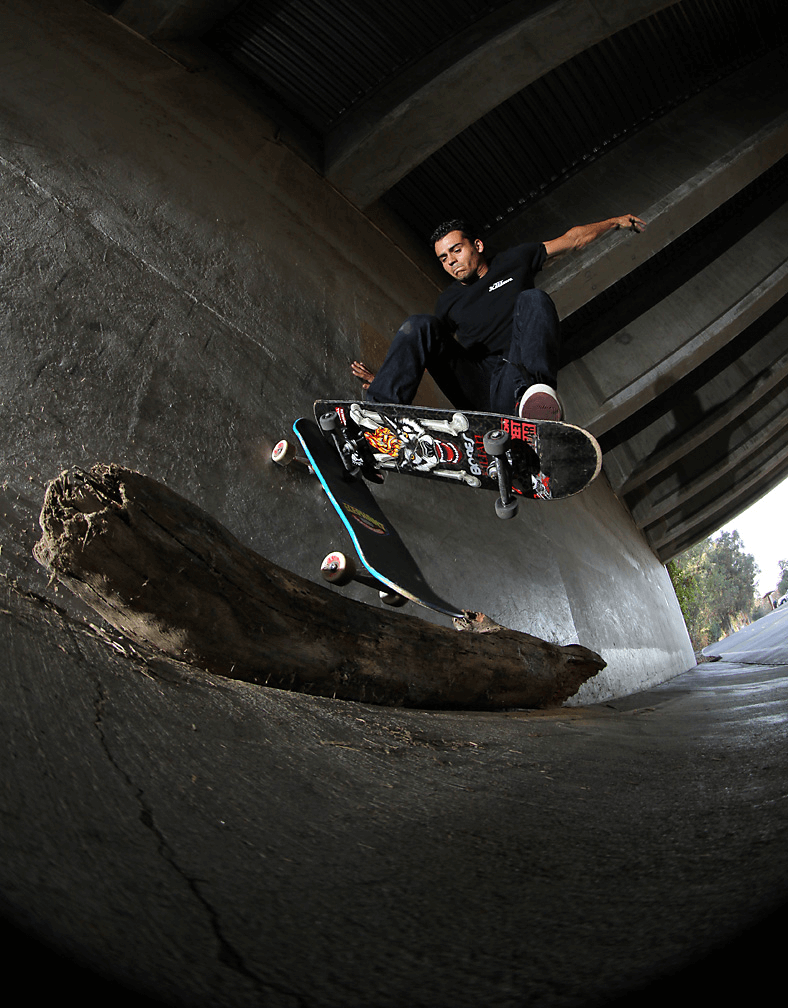
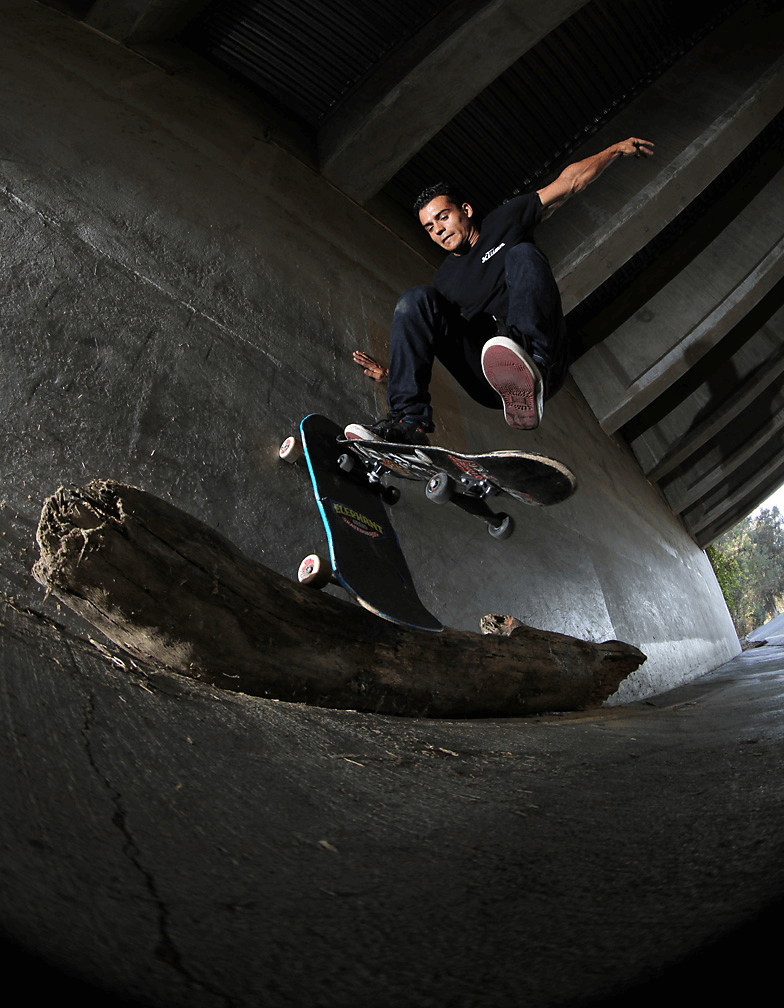
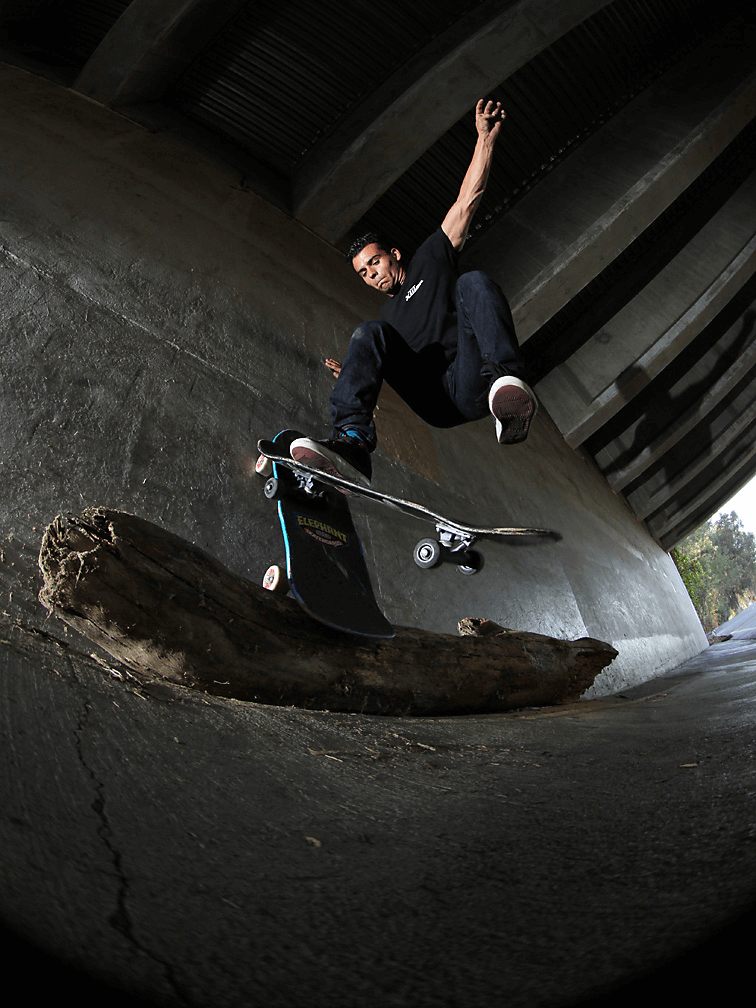



Sorry, the comment form is closed at this time.